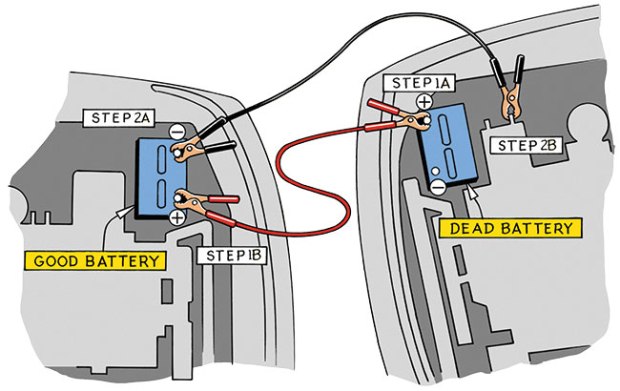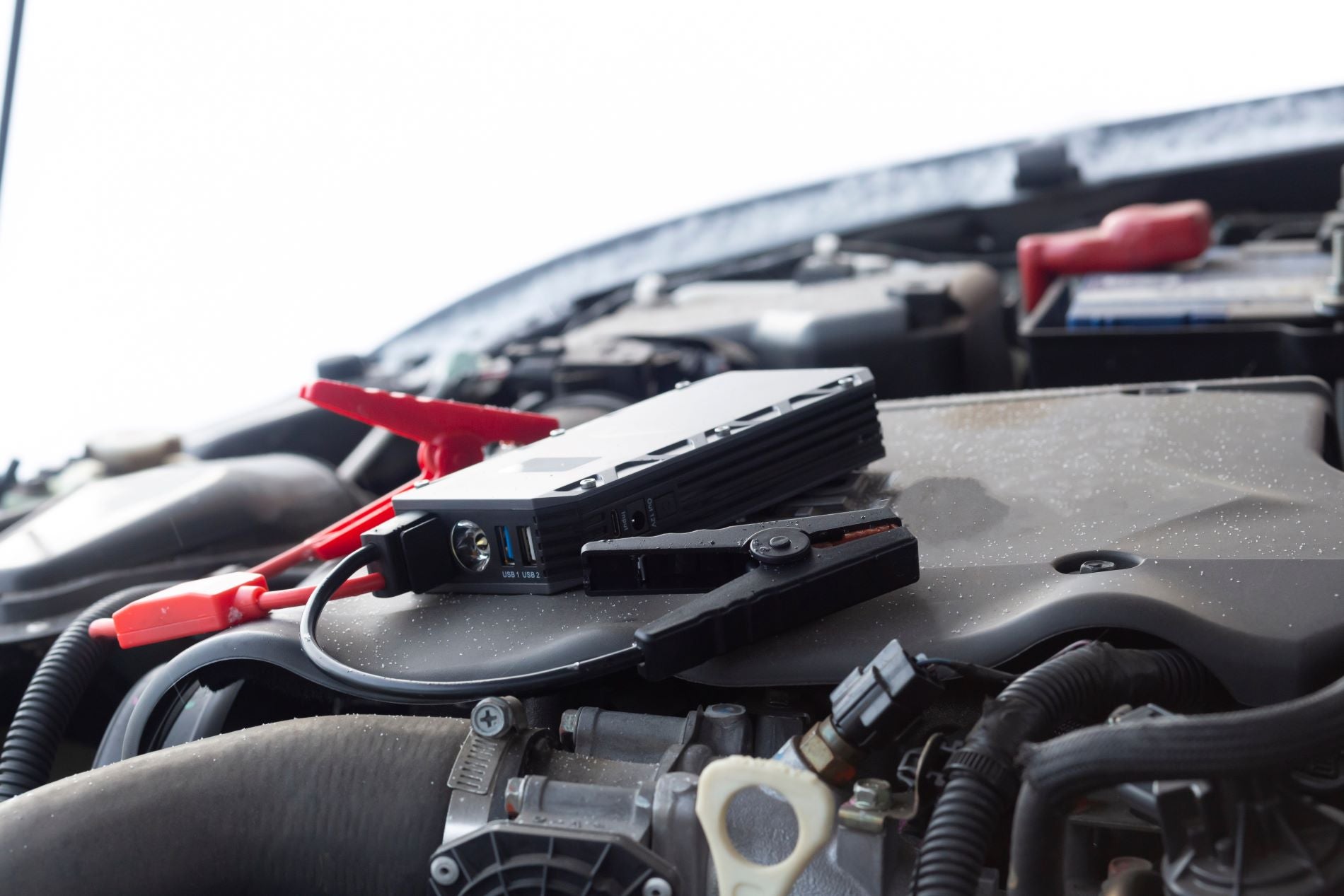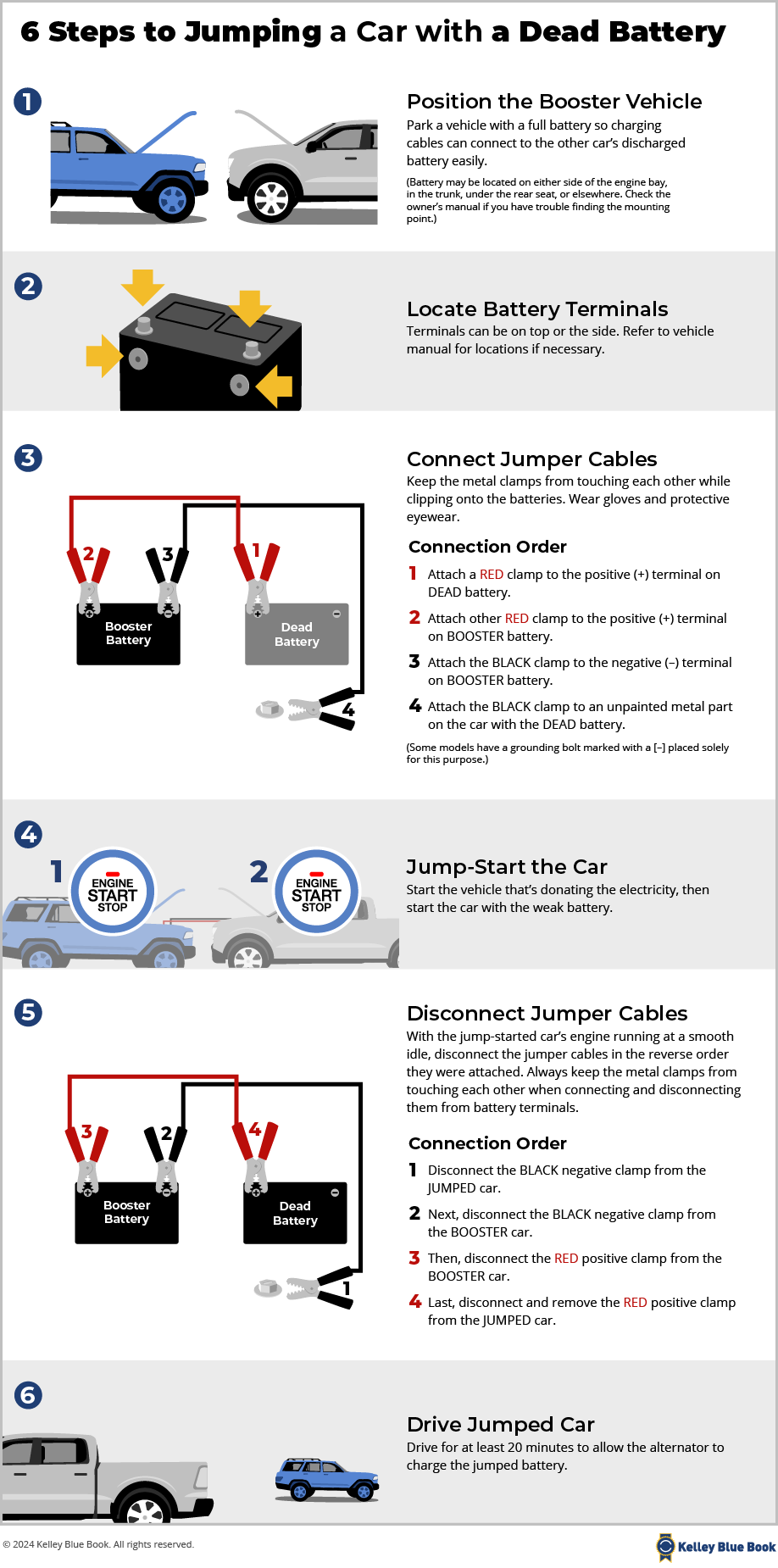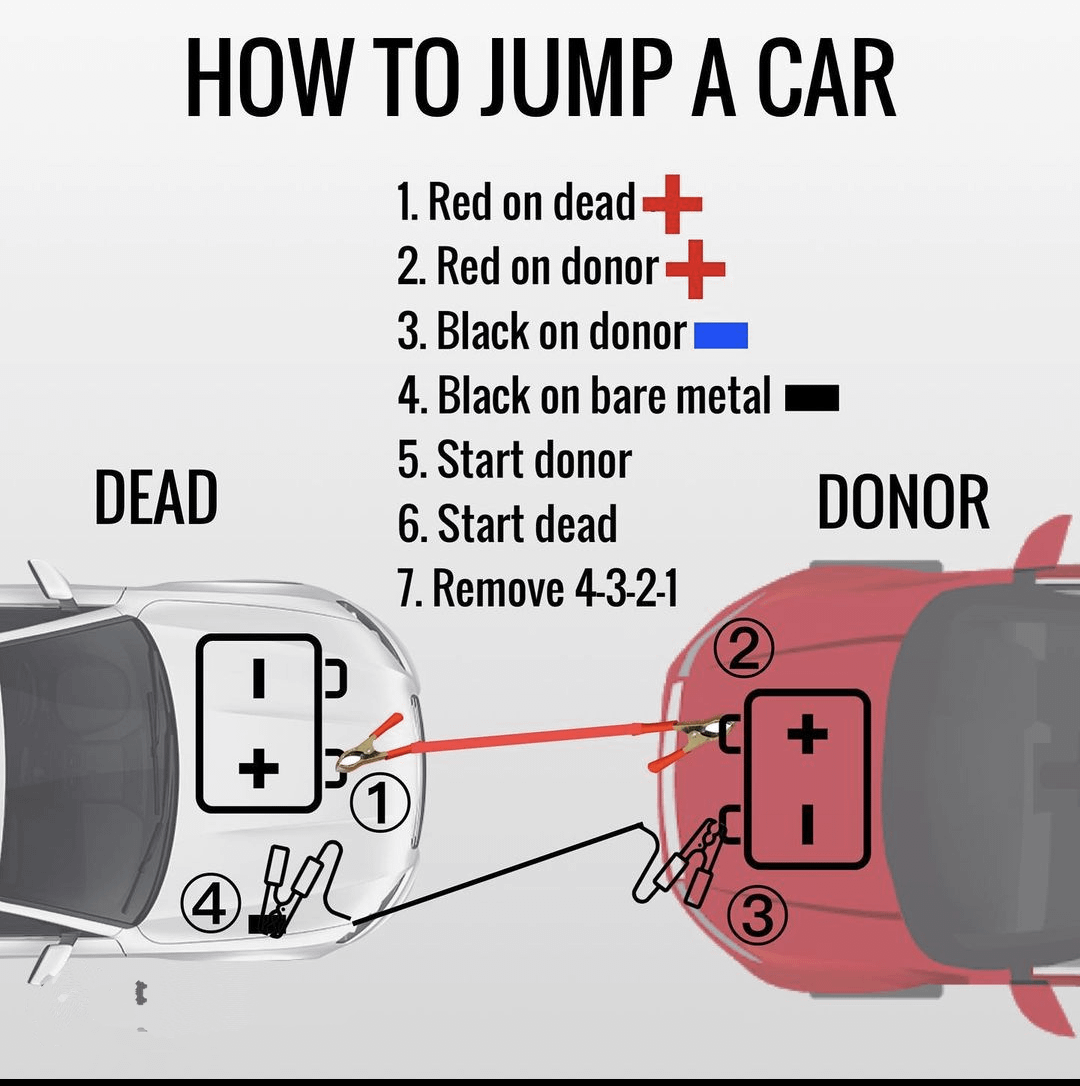Starting a dead battery can vary in time. It usually takes 10 to 20 minutes with jumper cables.
This depends on several factors, including the battery’s condition and the vehicle’s model. A dead battery can be a frustrating experience. Imagine being late for work or stuck in a parking lot. Knowing how long it takes to revive a dead battery is crucial.
This knowledge helps you plan better and avoid delays. Factors like the battery’s age, weather conditions, and the tools at hand can affect the time needed. Whether you are using jumper cables or a portable charger, understanding the process is key. In this blog, we will explore the steps involved and what influences the time it takes to get your vehicle up and running again. Stay tuned to learn more about this essential car maintenance skill.

Credit: scoutlife.org
Assessing The Battery Condition
Assessing battery condition is crucial to determine how long it takes to start a dead battery. Typically, jump-starting a dead battery takes a few minutes, depending on its condition and the jumper cables’ efficiency. Regular checks ensure the battery remains in good working order.
When faced with a car that won’t start, assessing the battery condition is crucial. Is the battery truly dead, or is it just deeply discharged? Knowing the difference can save you time and effort. Let’s dive into how you can effectively evaluate your car battery’s health.Signs Of A Dead Battery
Recognizing the signs of a dead battery can be straightforward. If your car engine cranks slowly or not at all, the battery might be dead. Dimming headlights and electrical malfunctions are also telltale signs. You might notice a clicking sound when you turn the key, but the engine doesn’t turn over. Have you ever experienced a dashboard warning light illuminating, suggesting battery issues? That could be a red flag. Sometimes, a bloated battery case is a visual cue of a dead battery. Remember, a battery over four years old might be nearing the end of its life.Tools For Battery Diagnosis
Diagnosing a battery issue doesn’t require advanced mechanical skills. A simple multimeter can be your best friend here. This tool measures voltage and can tell you if your battery holds enough charge. A fully charged battery should read around 12.6 volts or more. Another useful tool is a battery load tester, which simulates the battery’s load and checks its ability to maintain voltage. Testing can prevent misdiagnosing a battery as dead when it’s actually a different issue. Have you tried using a hydrometer for batteries with removable caps? It measures the specific gravity of the battery acid, offering insights into the battery’s condition. Keeping these tools handy can make diagnosing battery problems a breeze. Understanding these signs and tools can empower you to effectively assess your battery’s health. What’s your go-to method for checking a car battery? Share your tips in the comments!Preparation For Jump-starting
Jump-starting a dead battery requires careful planning. Preparation is key to ensure a smooth process. You need to follow a few steps to get started safely. Here’s how you can prepare.
Safety Precautions
Safety is the top priority. Keep your car in park or neutral. Ensure the brake is engaged. Turn off all electronics in the vehicle. Wear gloves to protect your hands. Avoid any open flames or sparks nearby.
Gathering Necessary Equipment
Collect all required tools before beginning. You need jumper cables. Ensure they are in good condition. Some cables have clamps with insulation. This prevents accidental shocks. A working vehicle is crucial for jump-starting. Position it close to the dead car.
A flashlight can be handy in low light. It helps you see better. A battery tester can check battery charge. It helps confirm battery status. It’s always good to have a manual nearby. Manuals guide you through the process.
Positioning Vehicles Correctly
Starting a dead battery typically takes about 5 to 10 minutes. Properly positioning vehicles before jump-starting ensures safety and efficiency. Connect jumper cables correctly for the best results.
Positioning vehicles correctly is an essential step in jump-starting a dead battery. Proper alignment can make the process quicker and safer, ensuring that both vehicles and their electrical systems remain unharmed. Misplacing the vehicles can lead to tangled cables or even damage, which nobody wants to deal with when they’re already facing a dead battery. Here’s how you can set up your vehicles for a successful jump-start.Optimal Placement For Jump Start
To jump-start a car, park the vehicles close enough so that the jumper cables can easily reach both batteries. Aim for about 18 inches apart, but ensure there’s enough room for you to move around comfortably. Remember, the vehicles should not touch each other. Align the two cars front to front or side by side, depending on the location of the batteries. If your battery is located in the back, consider parking rear to rear. This positioning minimizes cable stretch, reducing the risk of accidents.Ensuring Vehicle Compatibility
Before you connect the cables, check if both vehicles are compatible. Are they both 12-volt systems? Most cars and trucks run on these, but it’s always wise to double-check. Using incompatible vehicles can fry the electrical systems. Look at the battery terminals to ensure they’re in good condition. Corroded or damaged terminals can prevent a good connection. Clean them if necessary, but always ensure that you’re wearing gloves and have the car engines turned off. When you’ve positioned the vehicles correctly, you’re halfway through the process. Have you ever tried jump-starting with a friend’s car and noticed how their vehicle placement made things easier? It’s these small details that make a big difference in efficiency and safety.
Credit: www.daytonamercedes.com
Connecting Jumper Cables
Starting a dead battery with jumper cables usually takes around 5 minutes. Connect cables properly for fast results. Ensure good connections to both batteries for efficiency.
Connecting jumper cables can be a straightforward process when done correctly, but there are a few key steps you need to follow to ensure success. A dead battery can put a damper on your day, and knowing how to jumpstart it efficiently is a useful skill. Whether you’re a seasoned pro or a first-timer, understanding the nuances of connecting jumper cables can save you time and frustration. ###Proper Cable Attachment
Attaching jumper cables properly is crucial for a successful jumpstart. Start by identifying the positive and negative terminals on both batteries. Usually, the positive terminal is marked with a plus sign (+) and the negative with a minus sign (-). Connect the red cable to the positive terminal of the dead battery first. Then, attach the other end of the red cable to the positive terminal of the good battery. Next, connect the black cable to the negative terminal of the good battery. Finally, attach the other end of the black cable to an unpainted metal surface on the car with the dead battery, such as a bolt or bracket, away from the battery itself. ###Avoiding Common Mistakes
One common mistake is connecting the cables in the wrong order. This can lead to sparks or even damage to the car’s electrical system. Always follow the correct sequence: red to dead, red to live, black to live, then black to metal. Another mistake to watch out for is not securing the cable clamps properly. Loose connections can cause intermittent power flow, making it difficult to start the car. Ensure each clamp is firmly attached to the terminals or metal surface before proceeding. How many times have you rushed through a task only to realize a small oversight cost you more time? Take your time when connecting jumper cables. Double-checking your connections can prevent unwanted surprises. Have you ever tried jumpstarting a car and found it took longer than expected? Perhaps it was due to a simple mistake in cable connection. Proper cable attachment and avoiding these common pitfalls can make the difference between a quick start and a prolonged ordeal.Initiating The Jump Start
Initiating a jump start can breathe new life into a dead battery. This process is crucial when your car doesn’t start. Knowing the steps ensures a smooth operation. Here’s how you can do it efficiently.
Starting The Working Vehicle
Begin by locating the working vehicle’s battery. Connect the red jumper cable to its positive terminal. Then, attach the other end to the dead battery’s positive terminal. This establishes a path for energy transfer.
Next, take the black cable and connect it to the working battery’s negative terminal. Secure the other end to an unpainted metal surface on the dead vehicle. This helps prevent electrical shock during the jump start.
Start the working vehicle and let it run for a few minutes. This allows its battery to generate power. Ensure the engine is running smoothly before proceeding.
Attempting To Start The Dead Battery
Once the working vehicle is running, try starting the dead vehicle. Turn the ignition key and listen for any sound. You might hear the engine trying to turn over.
If the engine starts, let it run for a few minutes. This helps recharge the dead battery. Keep the vehicles connected during this time. It ensures the dead battery gains sufficient charge.
If the dead vehicle does not start, wait a few more minutes. Then, attempt to start it again. Check all connections to ensure they are secure.

Credit: www.kbb.com
Monitoring The Process
Jump-starting a dead battery usually takes about 5 to 10 minutes. Ensure the cables are connected properly. Let the engine run for a few minutes to recharge.
Monitoring the process of starting a dead battery is crucial to ensure success and safety. You don’t want to be stuck in the middle of nowhere with a car that just won’t start. Paying attention to the details can save you time and prevent further issues.Checking For Successful Startup
Once you’ve connected your jumper cables and followed the necessary steps, it’s time to check if the car starts. Turn the ignition key or press the start button. Listen for the engine’s sound—it should roar to life. If it does, congratulations! But don’t rush off just yet. Let the car run for a few minutes to charge the battery fully. If the car doesn’t start, you might need to recheck your connections. Ensure the cables are correctly attached to the battery terminals. Sometimes, a simple adjustment can make all the difference.Observing Warning Signs
As your car starts, be alert for any unusual sounds or dashboard warning lights. A clicking sound might indicate a weak battery or a faulty starter. If the dashboard lights are dim, the battery might not be holding charge properly. Watch for smoke or a burning smell. This could mean your cables are overheating or there’s an electrical issue. If you notice any of these signs, it’s best to consult a mechanic. Ignoring them could lead to bigger problems down the road. Have you ever experienced a dead battery? What steps did you take, and did you observe any warning signs? Share your experience in the comments to help others who might face the same issue.Post-jump Start Actions
Understanding how long it takes to start a dead battery is crucial. Typically, it takes 5 to 10 minutes to jump-start. Ensure cables are properly connected for a quicker process.
After jump-starting a dead battery, proper actions are crucial. They ensure your vehicle runs smoothly and prevent future battery issues. Knowing what steps to take after a jump start helps maintain battery health. Here’s a guide on what to do next.Removing Cables Safely
Disconnect jumper cables correctly to avoid sparks or damage. First, remove the negative cable from your car. Then, remove the negative cable from the donor vehicle. Next, remove the positive cable from your car. Finally, remove the positive cable from the donor vehicle. Always handle cables with care. Improper removal can lead to safety risks.Allowing Battery Recharge
Let your vehicle run for at least 30 minutes. This allows the battery to recharge naturally. Driving helps the alternator charge the battery. Avoid turning off the engine during this time. Sudden stops can drain the battery again. Regular driving after a jump start supports battery recovery. Consider checking the battery’s condition later. This ensures it’s holding charge properly.Preventing Future Battery Issues
Preventing future battery issues is crucial for ensuring your car starts smoothly every time. A dead battery can disrupt your plans and leave you stranded. By taking proactive steps, you can extend the life of your battery and avoid unexpected breakdowns.
Regular Maintenance Tips
Regular maintenance is key to a healthy battery. Clean the battery terminals regularly to prevent corrosion. Corrosion can interrupt the power flow, leading to starting problems. Use a mix of baking soda and water to gently scrub away any build-up.
Check the battery’s water levels if applicable. Some batteries require water to maintain optimal performance. If the water level is low, simply add distilled water. This simple step can prevent overheating and extend the battery’s life.
Ensure your battery is secured in place. A loose battery can vibrate excessively, damaging internal components. Double-check that all fasteners are tight after any maintenance work.
Signs Of Battery Replacement Needs
Recognizing signs of battery replacement needs can save you from unexpected issues. If your car’s engine cranks slowly, it might be time for a new battery. This is often a warning sign of reduced battery capacity.
Watch for dim headlights or electrical issues. A failing battery can struggle to power your car’s electrical systems. If your radio or lights flicker, consider getting your battery tested.
Pay attention to the age of your battery. Most batteries last between three to five years. If yours is nearing this age, consider replacing it before it fails completely.
Have you ever found yourself stuck with a dead battery just when you were in a rush? Regular checks could spare you this hassle. What steps will you take today to safeguard your battery’s health?
Frequently Asked Questions
How Long Does It Take To Start A Completely Dead Battery?
Starting a completely dead battery typically takes about 5 to 10 minutes with jumper cables. Ensure connections are secure, and let the donor vehicle run for a few minutes before attempting to start the dead battery. If it doesn’t start, the battery might need replacement.
Can A Car Battery Be So Dead It Won’t Jump Start?
Yes, a car battery can be too dead to jump start. If it’s severely discharged or damaged, it might not respond to a jump start. In such cases, replacing the battery is often necessary. Regular maintenance can prevent battery issues and ensure reliable performance.
How Long To Leave A Car Running To Charge A Dead Battery?
Leave the car running for at least 20-30 minutes to charge a dead battery. Ensure the alternator is functioning properly. Monitor the battery and avoid frequent short trips to maintain charge. If issues persist, consider a professional check-up.
How Long To Let The Battery Charge When Jumping?
Let the car battery charge for at least 5-10 minutes while jumping. This allows sufficient power transfer. Disconnect the cables safely after charging. If the battery doesn’t start, consider replacing it or seeking professional help. Regular maintenance ensures optimal battery performance and longevity.
Conclusion
Starting a dead battery doesn’t take long with the right tools. Jumper cables or a portable charger can help quickly. Always check connections for safety. Keep the engine running after starting to recharge the battery. Regular battery checks prevent future issues.
Learn basic maintenance to extend battery life. Practice safe jump-start techniques. Now you’re ready to tackle battery troubles confidently. Troubleshooting skills save time and stress. Stay prepared for unexpected battery problems. Simple solutions make a big difference. Keep your car’s battery in top shape for reliability.
